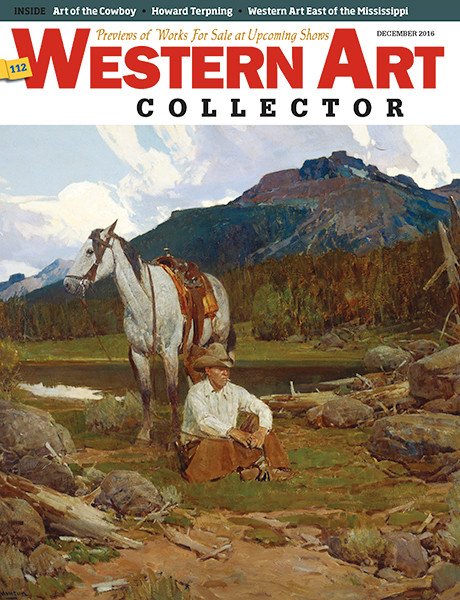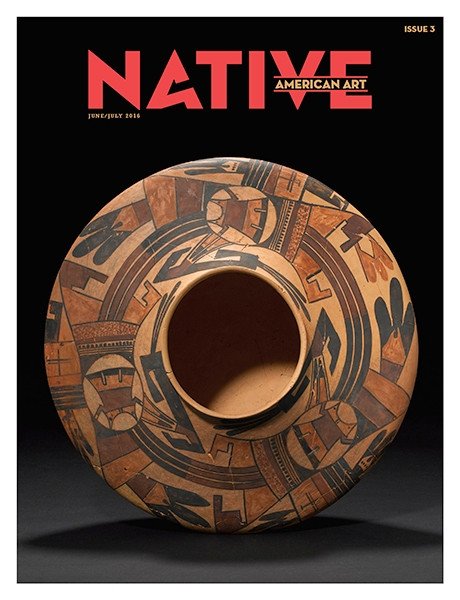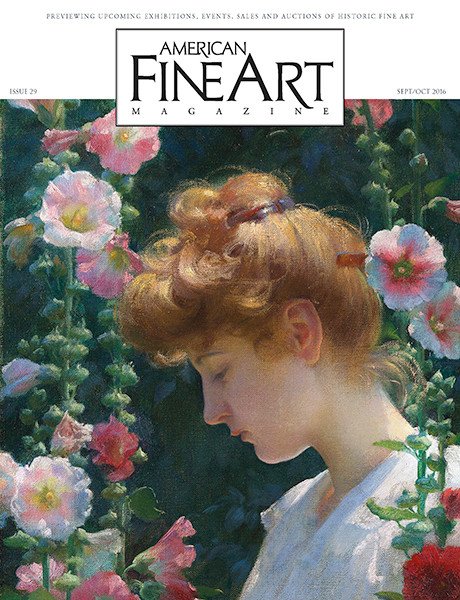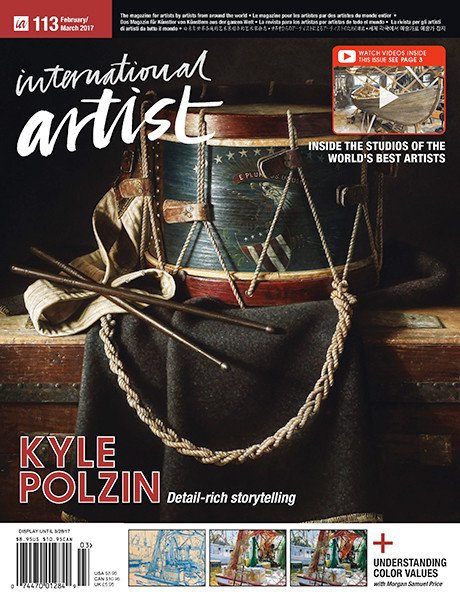Galerie Fledermaus
2753 W. Fullerton AveChicago, IL 60647
3126178711
Email this Gallery
Visit Gallery Website
Galerie Fledermaus
8/28/2021 - 9/26/2021
Agony & Ecstasy
Eric Serritella
Stoneware
22.5 x 24 x 14 inches (L x W x D)
The work of Eric Serritella is a paean to nature, offered in clay. His trompe l’oeil ceramic sculptures are effigies of nature burned by man. His forms echo natural organisms so perfectly, so poignantly, the wounds and scars he carves into their flesh register with a palpable pain. But in depicting the destruction wrought by humans on the earth, Serritella remains an optimist. He sows seeds of hope beneath the ruin; a bud beneath the charred forest floor, waiting to emerge. Serritella tells us that nature will survive long past our time here on earth. Decay is merely the process of nature reassembling itself; breaking down, changing form, and – like a fresh lump of clay – transforming into something new.
Serritella's work has found a home in the most prestigious of collections, worldwide, including: The Metropolitan Museum of Art, Smithsonian American Art Museum, Carnegie Museum of Art, Mint Museum, Everson Museum of Art, Fuller Craft Museum, Phoenix Airport Museum, Appleton Museum of Art, Memorial Art Gallery, Herbert F. Johnson Museum, Burchfield Penney Art Center, John F. Peto Studio Museum, Kamm Teapot Foundation, Cornell University Plantations Visitors Center, me Collectors Room, Stiftung Olbricht, Germany, China Changchun International Ceramics Gallery, China, Jingdezhen Sanbao Ceramic Arts Institute, China, and Shui-Li Snake Kiln and Cultural Park, Taiwan.

Artwork 8101
Eric Serritella
Stoneware
77 x 58 x 23 inches (L x W x D)
The work of Eric Serritella is a paean to nature, offered in clay. His trompe l’oeil ceramic sculptures are effigies of nature burned by man. His forms echo natural organisms so perfectly, so poignantly, the wounds and scars he carves into their flesh register with a palpable pain. But in depicting the destruction wrought by humans on the earth, Serritella remains an optimist. He sows seeds of hope beneath the ruin; a bud beneath the charred forest floor, waiting to emerge. Serritella tells us that nature will survive long past our time here on earth. Decay is merely the process of nature reassembling itself; breaking down, changing form, and – like a fresh lump of clay – transforming into something new.
Serritella's work has found a home in the most prestigious of collections, worldwide, including: The Metropolitan Museum of Art, Smithsonian American Art Museum, Carnegie Museum of Art, Mint Museum, Everson Museum of Art, Fuller Craft Museum, Phoenix Airport Museum, Appleton Museum of Art, Memorial Art Gallery, Herbert F. Johnson Museum, Burchfield Penney Art Center, John F. Peto Studio Museum, Kamm Teapot Foundation, Cornell University Plantations Visitors Center, me Collectors Room, Stiftung Olbricht, Germany, China Changchun International Ceramics Gallery, China, Jingdezhen Sanbao Ceramic Arts Institute, China, and Shui-Li Snake Kiln and Cultural Park, Taiwan.

Campfire (teapot)
Eric Serritella
Stoneware
10.5 x 9 x 12 inches (L x W x D)
The work of Eric Serritella is a paean to nature, offered in clay. His trompe l’oeil ceramic sculptures are effigies of nature burned by man. His forms echo natural organisms so perfectly, so poignantly, the wounds and scars he carves into their flesh register with a palpable pain. But in depicting the destruction wrought by humans on the earth, Serritella remains an optimist. He sows seeds of hope beneath the ruin; a bud beneath the charred forest floor, waiting to emerge. Serritella tells us that nature will survive long past our time here on earth. Decay is merely the process of nature reassembling itself; breaking down, changing form, and – like a fresh lump of clay – transforming into something new.
Serritella's work has found a home in the most prestigious of collections, worldwide, including: The Metropolitan Museum of Art, Smithsonian American Art Museum, Carnegie Museum of Art, Mint Museum, Everson Museum of Art, Fuller Craft Museum, Phoenix Airport Museum, Appleton Museum of Art, Memorial Art Gallery, Herbert F. Johnson Museum, Burchfield Penney Art Center, John F. Peto Studio Museum, Kamm Teapot Foundation, Cornell University Plantations Visitors Center, me Collectors Room, Stiftung Olbricht, Germany, China Changchun International Ceramics Gallery, China, Jingdezhen Sanbao Ceramic Arts Institute, China, and Shui-Li Snake Kiln and Cultural Park, Taiwan.

Charred Pine Bark Mug
Eric Serritella
Stoneware
9.25 x 8 x 4.25 inches (L x W x D)
The work of Eric Serritella is a paean to nature, offered in clay. His trompe l’oeil ceramic sculptures are effigies of nature burned by man. His forms echo natural organisms so perfectly, so poignantly, the wounds and scars he carves into their flesh register with a palpable pain. But in depicting the destruction wrought by humans on the earth, Serritella remains an optimist. He sows seeds of hope beneath the ruin; a bud beneath the charred forest floor, waiting to emerge. Serritella tells us that nature will survive long past our time here on earth. Decay is merely the process of nature reassembling itself; breaking down, changing form, and – like a fresh lump of clay – transforming into something new.
Serritella's work has found a home in the most prestigious of collections, worldwide, including: The Metropolitan Museum of Art, Smithsonian American Art Museum, Carnegie Museum of Art, Mint Museum, Everson Museum of Art, Fuller Craft Museum, Phoenix Airport Museum, Appleton Museum of Art, Memorial Art Gallery, Herbert F. Johnson Museum, Burchfield Penney Art Center, John F. Peto Studio Museum, Kamm Teapot Foundation, Cornell University Plantations Visitors Center, me Collectors Room, Stiftung Olbricht, Germany, China Changchun International Ceramics Gallery, China, Jingdezhen Sanbao Ceramic Arts Institute, China, and Shui-Li Snake Kiln and Cultural Park, Taiwan.

Emergence
Eric Serritella
Stoneware
74.5 x 32 x 34 inches (L x W x D)
The work of Eric Serritella is a paean to nature, offered in clay. His trompe l’oeil ceramic sculptures are effigies of nature burned by man. His forms echo natural organisms so perfectly, so poignantly, the wounds and scars he carves into their flesh register with a palpable pain. But in depicting the destruction wrought by humans on the earth, Serritella remains an optimist. He sows seeds of hope beneath the ruin; a bud beneath the charred forest floor, waiting to emerge. Serritella tells us that nature will survive long past our time here on earth. Decay is merely the process of nature reassembling itself; breaking down, changing form, and – like a fresh lump of clay – transforming into something new.
Serritella's work has found a home in the most prestigious of collections, worldwide, including: The Metropolitan Museum of Art, Smithsonian American Art Museum, Carnegie Museum of Art, Mint Museum, Everson Museum of Art, Fuller Craft Museum, Phoenix Airport Museum, Appleton Museum of Art, Memorial Art Gallery, Herbert F. Johnson Museum, Burchfield Penney Art Center, John F. Peto Studio Museum, Kamm Teapot Foundation, Cornell University Plantations Visitors Center, me Collectors Room, Stiftung Olbricht, Germany, China Changchun International Ceramics Gallery, China, Jingdezhen Sanbao Ceramic Arts Institute, China, and Shui-Li Snake Kiln and Cultural Park, Taiwan.

Entwined
Eric Serritella
Stoneware
15 x 8 x 4 inches (L x W x D)
The work of Eric Serritella is a paean to nature, offered in clay. His trompe l’oeil ceramic sculptures are effigies of nature burned by man. His forms echo natural organisms so perfectly, so poignantly, the wounds and scars he carves into their flesh register with a palpable pain. But in depicting the destruction wrought by humans on the earth, Serritella remains an optimist. He sows seeds of hope beneath the ruin; a bud beneath the charred forest floor, waiting to emerge. Serritella tells us that nature will survive long past our time here on earth. Decay is merely the process of nature reassembling itself; breaking down, changing form, and – like a fresh lump of clay – transforming into something new.
Serritella's work has found a home in the most prestigious of collections, worldwide, including: The Metropolitan Museum of Art, Smithsonian American Art Museum, Carnegie Museum of Art, Mint Museum, Everson Museum of Art, Fuller Craft Museum, Phoenix Airport Museum, Appleton Museum of Art, Memorial Art Gallery, Herbert F. Johnson Museum, Burchfield Penney Art Center, John F. Peto Studio Museum, Kamm Teapot Foundation, Cornell University Plantations Visitors Center, me Collectors Room, Stiftung Olbricht, Germany, China Changchun International Ceramics Gallery, China, Jingdezhen Sanbao Ceramic Arts Institute, China, and Shui-Li Snake Kiln and Cultural Park, Taiwan.

Ghosts of the Muse
Eric Serritella
Stoneware
46 x 24 x 40 inches (L x W x D)
The work of Eric Serritella is a paean to nature, offered in clay. His trompe l’oeil ceramic sculptures are effigies of nature burned by man. His forms echo natural organisms so perfectly, so poignantly, the wounds and scars he carves into their flesh register with a palpable pain. But in depicting the destruction wrought by humans on the earth, Serritella remains an optimist. He sows seeds of hope beneath the ruin; a bud beneath the charred forest floor, waiting to emerge. Serritella tells us that nature will survive long past our time here on earth. Decay is merely the process of nature reassembling itself; breaking down, changing form, and – like a fresh lump of clay – transforming into something new.
Serritella's work has found a home in the most prestigious of collections, worldwide, including: The Metropolitan Museum of Art, Smithsonian American Art Museum, Carnegie Museum of Art, Mint Museum, Everson Museum of Art, Fuller Craft Museum, Phoenix Airport Museum, Appleton Museum of Art, Memorial Art Gallery, Herbert F. Johnson Museum, Burchfield Penney Art Center, John F. Peto Studio Museum, Kamm Teapot Foundation, Cornell University Plantations Visitors Center, me Collectors Room, Stiftung Olbricht, Germany, China Changchun International Ceramics Gallery, China, Jingdezhen Sanbao Ceramic Arts Institute, China, and Shui-Li Snake Kiln and Cultural Park, Taiwan.

Igneous
Eric Serritella
Stoneware
30 x 16 x 13 inches (L x W x D)
The work of Eric Serritella is a paean to nature, offered in clay. His trompe l’oeil ceramic sculptures are effigies of nature burned by man. His forms echo natural organisms so perfectly, so poignantly, the wounds and scars he carves into their flesh register with a palpable pain. But in depicting the destruction wrought by humans on the earth, Serritella remains an optimist. He sows seeds of hope beneath the ruin; a bud beneath the charred forest floor, waiting to emerge. Serritella tells us that nature will survive long past our time here on earth. Decay is merely the process of nature reassembling itself; breaking down, changing form, and – like a fresh lump of clay – transforming into something new.
Serritella's work has found a home in the most prestigious of collections, worldwide, including: The Metropolitan Museum of Art, Smithsonian American Art Museum, Carnegie Museum of Art, Mint Museum, Everson Museum of Art, Fuller Craft Museum, Phoenix Airport Museum, Appleton Museum of Art, Memorial Art Gallery, Herbert F. Johnson Museum, Burchfield Penney Art Center, John F. Peto Studio Museum, Kamm Teapot Foundation, Cornell University Plantations Visitors Center, me Collectors Room, Stiftung Olbricht, Germany, China Changchun International Ceramics Gallery, China, Jingdezhen Sanbao Ceramic Arts Institute, China, and Shui-Li Snake Kiln and Cultural Park, Taiwan.

Let Yourself Go
Eric Serritella
Stoneware
26 x 9 x 7 inches (L x W x D)
The work of Eric Serritella is a paean to nature, offered in clay. His trompe l’oeil ceramic sculptures are effigies of nature burned by man. His forms echo natural organisms so perfectly, so poignantly, the wounds and scars he carves into their flesh register with a palpable pain. But in depicting the destruction wrought by humans on the earth, Serritella remains an optimist. He sows seeds of hope beneath the ruin; a bud beneath the charred forest floor, waiting to emerge. Serritella tells us that nature will survive long past our time here on earth. Decay is merely the process of nature reassembling itself; breaking down, changing form, and – like a fresh lump of clay – transforming into something new.
Serritella's work has found a home in the most prestigious of collections, worldwide, including: The Metropolitan Museum of Art, Smithsonian American Art Museum, Carnegie Museum of Art, Mint Museum, Everson Museum of Art, Fuller Craft Museum, Phoenix Airport Museum, Appleton Museum of Art, Memorial Art Gallery, Herbert F. Johnson Museum, Burchfield Penney Art Center, John F. Peto Studio Museum, Kamm Teapot Foundation, Cornell University Plantations Visitors Center, me Collectors Room, Stiftung Olbricht, Germany, China Changchun International Ceramics Gallery, China, Jingdezhen Sanbao Ceramic Arts Institute, China, and Shui-Li Snake Kiln and Cultural Park, Taiwan.

Oishii
Eric Serritella
Stoneware
15.5 x 11.25 x 6 inches (L x W x D)
The work of Eric Serritella is a paean to nature, offered in clay. His trompe l’oeil ceramic sculptures are effigies of nature burned by man. His forms echo natural organisms so perfectly, so poignantly, the wounds and scars he carves into their flesh register with a palpable pain. But in depicting the destruction wrought by humans on the earth, Serritella remains an optimist. He sows seeds of hope beneath the ruin; a bud beneath the charred forest floor, waiting to emerge. Serritella tells us that nature will survive long past our time here on earth. Decay is merely the process of nature reassembling itself; breaking down, changing form, and – like a fresh lump of clay – transforming into something new.
Serritella's work has found a home in the most prestigious of collections, worldwide, including: The Metropolitan Museum of Art, Smithsonian American Art Museum, Carnegie Museum of Art, Mint Museum, Everson Museum of Art, Fuller Craft Museum, Phoenix Airport Museum, Appleton Museum of Art, Memorial Art Gallery, Herbert F. Johnson Museum, Burchfield Penney Art Center, John F. Peto Studio Museum, Kamm Teapot Foundation, Cornell University Plantations Visitors Center, me Collectors Room, Stiftung Olbricht, Germany, China Changchun International Ceramics Gallery, China, Jingdezhen Sanbao Ceramic Arts Institute, China, and Shui-Li Snake Kiln and Cultural Park, Taiwan.

Remnants
Eric Serritella
Stoneware
22 x 18 x 9 inches (L x W x D)
The work of Eric Serritella is a paean to nature, offered in clay. His trompe l’oeil ceramic sculptures are effigies of nature burned by man. His forms echo natural organisms so perfectly, so poignantly, the wounds and scars he carves into their flesh register with a palpable pain. But in depicting the destruction wrought by humans on the earth, Serritella remains an optimist. He sows seeds of hope beneath the ruin; a bud beneath the charred forest floor, waiting to emerge. Serritella tells us that nature will survive long past our time here on earth. Decay is merely the process of nature reassembling itself; breaking down, changing form, and – like a fresh lump of clay – transforming into something new.
Serritella's work has found a home in the most prestigious of collections, worldwide, including: The Metropolitan Museum of Art, Smithsonian American Art Museum, Carnegie Museum of Art, Mint Museum, Everson Museum of Art, Fuller Craft Museum, Phoenix Airport Museum, Appleton Museum of Art, Memorial Art Gallery, Herbert F. Johnson Museum, Burchfield Penney Art Center, John F. Peto Studio Museum, Kamm Teapot Foundation, Cornell University Plantations Visitors Center, me Collectors Room, Stiftung Olbricht, Germany, China Changchun International Ceramics Gallery, China, Jingdezhen Sanbao Ceramic Arts Institute, China, and Shui-Li Snake Kiln and Cultural Park, Taiwan.

Revealed
Eric Serritella
Stoneware
24 x 20 x 17 inches (L x W x D)
The work of Eric Serritella is a paean to nature, offered in clay. His trompe l’oeil ceramic sculptures are effigies of nature burned by man. His forms echo natural organisms so perfectly, so poignantly, the wounds and scars he carves into their flesh register with a palpable pain. But in depicting the destruction wrought by humans on the earth, Serritella remains an optimist. He sows seeds of hope beneath the ruin; a bud beneath the charred forest floor, waiting to emerge. Serritella tells us that nature will survive long past our time here on earth. Decay is merely the process of nature reassembling itself; breaking down, changing form, and – like a fresh lump of clay – transforming into something new.
Serritella's work has found a home in the most prestigious of collections, worldwide, including: The Metropolitan Museum of Art, Smithsonian American Art Museum, Carnegie Museum of Art, Mint Museum, Everson Museum of Art, Fuller Craft Museum, Phoenix Airport Museum, Appleton Museum of Art, Memorial Art Gallery, Herbert F. Johnson Museum, Burchfield Penney Art Center, John F. Peto Studio Museum, Kamm Teapot Foundation, Cornell University Plantations Visitors Center, me Collectors Room, Stiftung Olbricht, Germany, China Changchun International Ceramics Gallery, China, Jingdezhen Sanbao Ceramic Arts Institute, China, and Shui-Li Snake Kiln and Cultural Park, Taiwan.

Roots, Opus #1
Eric Serritella
Stoneware
52 x 18 x 15 inches (L x W x D)
The work of Eric Serritella is a paean to nature, offered in clay. His trompe l’oeil ceramic sculptures are effigies of nature burned by man. His forms echo natural organisms so perfectly, so poignantly, the wounds and scars he carves into their flesh register with a palpable pain. But in depicting the destruction wrought by humans on the earth, Serritella remains an optimist. He sows seeds of hope beneath the ruin; a bud beneath the charred forest floor, waiting to emerge. Serritella tells us that nature will survive long past our time here on earth. Decay is merely the process of nature reassembling itself; breaking down, changing form, and – like a fresh lump of clay – transforming into something new.
Serritella's work has found a home in the most prestigious of collections, worldwide, including: The Metropolitan Museum of Art, Smithsonian American Art Museum, Carnegie Museum of Art, Mint Museum, Everson Museum of Art, Fuller Craft Museum, Phoenix Airport Museum, Appleton Museum of Art, Memorial Art Gallery, Herbert F. Johnson Museum, Burchfield Penney Art Center, John F. Peto Studio Museum, Kamm Teapot Foundation, Cornell University Plantations Visitors Center, me Collectors Room, Stiftung Olbricht, Germany, China Changchun International Ceramics Gallery, China, Jingdezhen Sanbao Ceramic Arts Institute, China, and Shui-Li Snake Kiln and Cultural Park, Taiwan.

Solifleur
Eric Serritella
Stoneware
12 x 6 x 5.5 inches (L x W x D)
The work of Eric Serritella is a paean to nature, offered in clay. His trompe l’oeil ceramic sculptures are effigies of nature burned by man. His forms echo natural organisms so perfectly, so poignantly, the wounds and scars he carves into their flesh register with a palpable pain. But in depicting the destruction wrought by humans on the earth, Serritella remains an optimist. He sows seeds of hope beneath the ruin; a bud beneath the charred forest floor, waiting to emerge. Serritella tells us that nature will survive long past our time here on earth. Decay is merely the process of nature reassembling itself; breaking down, changing form, and – like a fresh lump of clay – transforming into something new.
Serritella's work has found a home in the most prestigious of collections, worldwide, including: The Metropolitan Museum of Art, Smithsonian American Art Museum, Carnegie Museum of Art, Mint Museum, Everson Museum of Art, Fuller Craft Museum, Phoenix Airport Museum, Appleton Museum of Art, Memorial Art Gallery, Herbert F. Johnson Museum, Burchfield Penney Art Center, John F. Peto Studio Museum, Kamm Teapot Foundation, Cornell University Plantations Visitors Center, me Collectors Room, Stiftung Olbricht, Germany, China Changchun International Ceramics Gallery, China, Jingdezhen Sanbao Ceramic Arts Institute, China, and Shui-Li Snake Kiln and Cultural Park, Taiwan.

Waiting for Heiwa (teapot)
Eric Serritella
Stoneware
23.5 x 15 x 6.5 inches (L x W x D)
The work of Eric Serritella is a paean to nature, offered in clay. His trompe l’oeil ceramic sculptures are effigies of nature burned by man. His forms echo natural organisms so perfectly, so poignantly, the wounds and scars he carves into their flesh register with a palpable pain. But in depicting the destruction wrought by humans on the earth, Serritella remains an optimist. He sows seeds of hope beneath the ruin; a bud beneath the charred forest floor, waiting to emerge. Serritella tells us that nature will survive long past our time here on earth. Decay is merely the process of nature reassembling itself; breaking down, changing form, and – like a fresh lump of clay – transforming into something new.
Serritella's work has found a home in the most prestigious of collections, worldwide, including: The Metropolitan Museum of Art, Smithsonian American Art Museum, Carnegie Museum of Art, Mint Museum, Everson Museum of Art, Fuller Craft Museum, Phoenix Airport Museum, Appleton Museum of Art, Memorial Art Gallery, Herbert F. Johnson Museum, Burchfield Penney Art Center, John F. Peto Studio Museum, Kamm Teapot Foundation, Cornell University Plantations Visitors Center, me Collectors Room, Stiftung Olbricht, Germany, China Changchun International Ceramics Gallery, China, Jingdezhen Sanbao Ceramic Arts Institute, China, and Shui-Li Snake Kiln and Cultural Park, Taiwan.

Weathered Solifleur
Eric Serritella
Stoneware
3 x 7 x 7 inches (L x W x D)
The work of Eric Serritella is a paean to nature, offered in clay. His trompe l’oeil ceramic sculptures are effigies of nature burned by man. His forms echo natural organisms so perfectly, so poignantly, the wounds and scars he carves into their flesh register with a palpable pain. But in depicting the destruction wrought by humans on the earth, Serritella remains an optimist. He sows seeds of hope beneath the ruin; a bud beneath the charred forest floor, waiting to emerge. Serritella tells us that nature will survive long past our time here on earth. Decay is merely the process of nature reassembling itself; breaking down, changing form, and – like a fresh lump of clay – transforming into something new.
Serritella's work has found a home in the most prestigious of collections, worldwide, including: The Metropolitan Museum of Art, Smithsonian American Art Museum, Carnegie Museum of Art, Mint Museum, Everson Museum of Art, Fuller Craft Museum, Phoenix Airport Museum, Appleton Museum of Art, Memorial Art Gallery, Herbert F. Johnson Museum, Burchfield Penney Art Center, John F. Peto Studio Museum, Kamm Teapot Foundation, Cornell University Plantations Visitors Center, me Collectors Room, Stiftung Olbricht, Germany, China Changchun International Ceramics Gallery, China, Jingdezhen Sanbao Ceramic Arts Institute, China, and Shui-Li Snake Kiln and Cultural Park, Taiwan.




